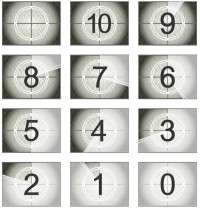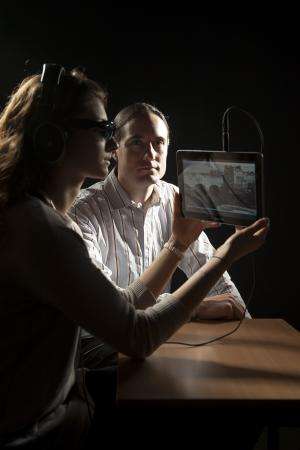Congenitally blind visualise numbers opposite way to sighted

(Medical Xpress)—For the first time, scientists have uncovered that people blind from birth visualise numbers the opposite way around to sighted people.
Through a recent study, the researchers in our Department of Psychology were surprised to find that the 'mental number line' for congenitally blind people ran in the opposite direction to sighted people, with larger numbers to the left and smaller numbers to the right.
Whereas a sighted person would count 1, 2, 3, 4, 5, the researchers have found that someone blind from birth mentally visualises their number line from right to left, effectively 5, 4, 3, 2, 1.
Senior Lecturer from the Department, Dr Michael Proulx explained: "Our unexpected results relate to the fact that people who were born visually impaired like to map the position of objects in relation to themselves.
"It is likely that this style of spatial representation extends to numbers too, and the right-handed participants mapped the number line from their dominant right hand."
The study used a novel 'random number generation' procedure where volunteers were asked to say numbers while turning their head to the left or the right. This task is linked to how the brain visualises a mental number line.

As part of the study, an international team from Bath, Sabanci University (Turkey) and Taisho University (Japan) compared responses of congenitally blind people, with the adventitiously blind – those who were born with vision – and sighted, but blindfolded, volunteers.
Previous studies have shown that people in Western cultures, where writing runs from left to right, possess a similar mental number line, with small numbers on the left and larger numbers on the right. But in cultures where writing flows from right to left, for example Arabic, people's mental number lines runs in a similar direction. This is the first time scientists have uncovered that blind individuals in a Western culture also had a right to left number line.
Dr Proulx added: "Remembering and representing numbers is an important skill, and the foundation of mental maths. Visually impaired people are just as good, if not better, at mathematics than sighted people – Georgian Maths Professor and Royal Society Fellow, Nicholas Saunderson as one famous example.
"What makes this work exciting is that Saunderson may have been able to advance mathematics with an entirely different mental representation of numbers than that of sighted contemporaries like Isaac Newton."
More information: Achille Pasqualotto, Shuichiro Taya, Michael J. Proulx, "Sensory deprivation: Visual experience alters the mental number line," Behavioural Brain Research, Volume 261, 15 March 2014, Pages 110-113, ISSN 0166-4328, dx.doi.org/10.1016/j.bbr.2013.12.017.



















